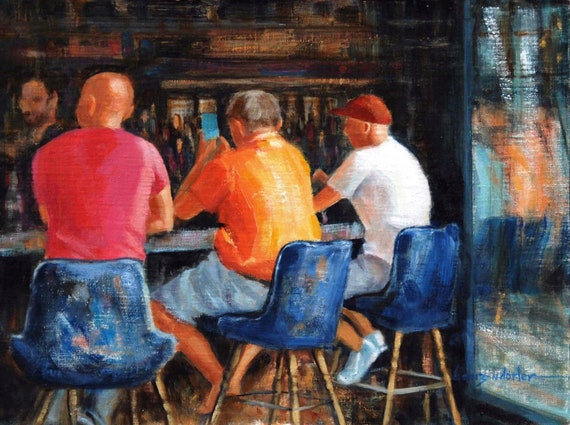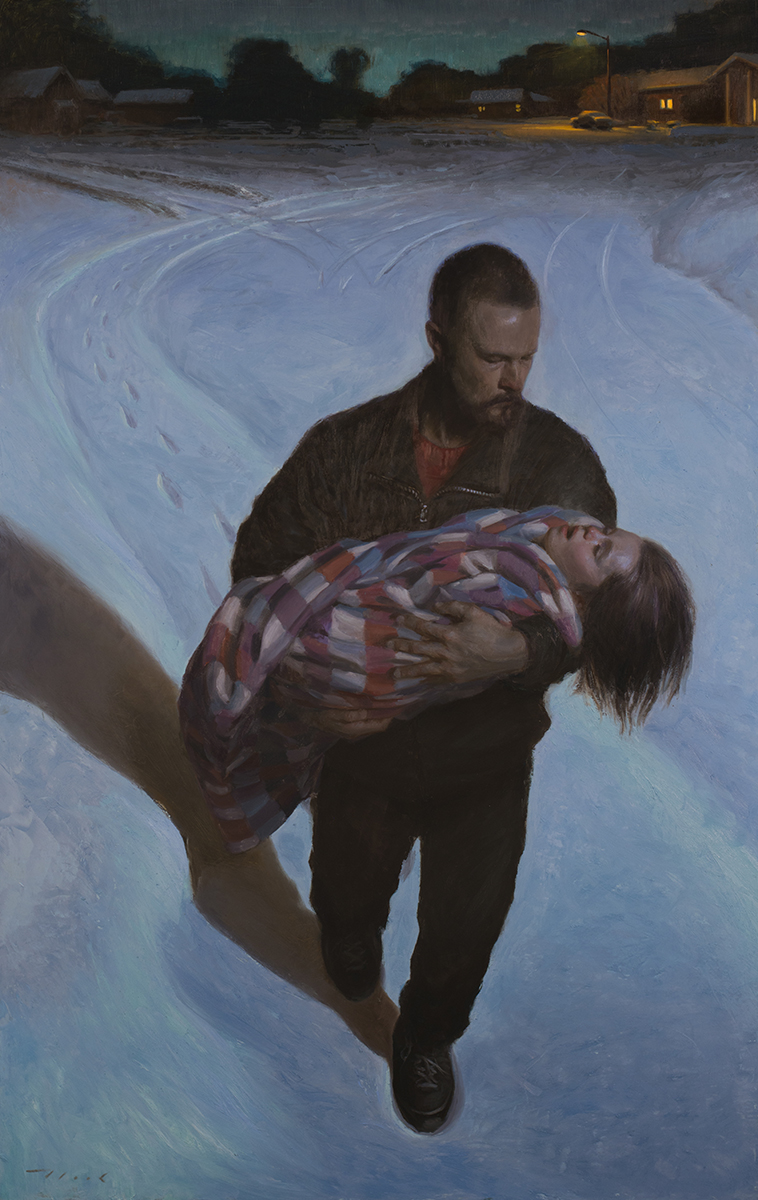The Impact of Figurative Oil Painting on Modern Art and Society
Wiki Article
The Evolution of Metaphorical Oil Painting: Recognizing Its Historical Relevance and Modern Interpretations
The advancement of metaphorical oil painting offers as a compelling lens where to examine the interplay between artistic expression and historical context. From the careful naturalism of the Renaissance to the stirring power of the Baroque, each period has contributed layers of definition and strategy to this ageless medium. Contemporary musicians, attracting from this abundant heritage, are currently reinterpreting the human figure in manner ins which challenge conventional stories. As we discover these transformations, one should take into consideration just how the discussion in between previous and existing informs not just creative practice however also social reflections in a progressively complex globe.Origins of Figurative Oil Paint
The origins of figurative oil paint can be traced back to the early Renaissance in Europe, specifically in the 15th century. This period marked a substantial departure from the stiff types and level depictions particular of medieval art. Artists began to check out naturalism, highlighting the human number and its psychological expression. The advancement of oil paint permitted greater deepness of shade and detail, enhancing the realism and vibrancy of their job.
In this transformative period, numbers were usually shown within contextually abundant atmospheres, showcasing not only their physical attributes yet also their mental states. Pioneers such as Jan van Eyck and Titian harnessed the tool's convenience, utilizing layering methods to achieve luminance and structure. This development facilitated the representation of complex materials and the nuances of complexion, contributing to the development of portraiture and narrative scenes.
Additionally, the Renaissance focus on humanism promoted a gratitude for individualism, which subsequently influenced musicians to produce even more dynamic and relatable numbers - figurative oil painting. Consequently, metaphorical oil painting became a powerful lorry for storytelling and psychological interaction, laying the groundwork for future imaginative movements and designs
Key Historic Movements
Considerable historic motions have actually shaped the advancement of metaphorical oil painting, each adding unique ideologies and methods that increased the medium's opportunities. The Renaissance marked a zero hour, emphasizing realistic look and the human form, with musicians like Leonardo da Vinci and Michelangelo pushing the limits of physiological accuracy and viewpoint. Following this, the Baroque era brought significant contrasts of light and shadow, exhibited by Caravaggio, who infused religious motifs with intense emotionality.The 19th century presented Romanticism and Realism, where musicians such as Delacroix and Courbet challenged classic ideals, concentrating on private expression and everyday life. The advent of Impressionism additionally revolutionized the tool by stressing the impacts of light and shade, leading to a departure from typical representation.
In the very early 20th century, movements like Expressionism and Cubism redefined metaphorical painting via abstraction and the exploration of psychological deepness. Each of these movements not just mirrored the social modifications of their times yet also laid the groundwork for modern analyses. The interplay between these historic motions has actually created a rich tapestry of styles and viewpoints, influencing modern-day artists in their pursuit of catching the human experience on canvas.
Strategies and Materials Advancement

Throughout the Baroque period, strategies such as chiaroscuro and sfumato emerged, boosting the emotional vibration of figurative make-ups. Artists started to try out lusters and impasto, manipulating appearance and luminosity. By the 19th century, technologies like the use of pre-mixed paints in tubes revolutionized availability, allowing musicians to repaint en plein air and catch the short lived effects of light.
The 20th century experienced the introduction of synthetic pigments and tools, which expanded the combination and modified the consistency of oil paints. The expedition of new application methods, such as palette Get More Information blades and brushes of differing tightness, more diversified creative expression. Jointly, these developments mirror the developing partnership between materials, methods, and the imaginative vision fundamental in metaphorical oil paint.

Contemporary Interpretations
Contemporary analyses of metaphorical oil paint mirror a vibrant discussion in between practice and innovation, where artists challenge established norms and check out diverse styles. This advancement shows up in numerous means, as modern musicians blend classic methods with modern concepts, frequently dealing with social, political, and personal narratives.Many practitioners attract motivation from historic works, yet they infuse their pieces with modern viewpoints, making use of the human type as an automobile for commentary on identity, sex, and society. Artists increasingly trying out abstraction, distortion, and combined media, which enables a More hints broader analysis of the number and its context.
Furthermore, making use of dazzling color palettes and unusual structures frequently offers to interrupt conventional watching experiences, prompting crucial involvement from target markets. This shift in emphasis prolongs beyond aesthetics; it reflects a growing recognition of the intricacies of human experience in an interconnected world.
As figurative oil paint continues to develop, it remains an essential medium for discovering the subtleties of modern life, personifying both a respect for heritage and a commitment to modern thought. The result is a rich tapestry of expression that reverberates with the intricacies of the contemporary human problem.
Effect On Modern Art
The influence of metaphorical oil painting on modern-day art is extensive, as it has constantly influenced a myriad of imaginative activities and practices throughout the 20th and 21st centuries. From Expressionism to Surrealism and beyond, the expedition of the human number has actually continued to be a central theme, allowing artists to communicate complicated feelings and stories. This focus on metaphorical depiction has actually led to a re-examination of conventional methods, leading to ingenious techniques that mix realistic look with abstraction.
In addition, modern musicians have actually welcomed metaphorical oil paint as a way to resolve political and social concerns, making use of the tool to test understandings of identity, gender, and culture. The resurgence of interest in metaphorical job in recent years mirrors a wishing for link in a progressively electronic globe, where human experience and feeling are vital.
Furthermore, the dialogue in between metaphorical oil painting and modern art is evident in the jobs of musicians such as Kehinde Wiley and Jenny Saville, who make use of historic recommendations while infusing their items with modern significance. Ultimately, metaphorical oil painting remains to form and redefine contemporary artistic expression, underscoring its long-lasting importance in the art world.
Verdict
The development of figurative oil paint highlights its historical value and flexibility across various imaginative motions. From the naturalism of the Renaissance to the stirring expressions of the Baroque and the ingenious approaches of modernity, this tool has consistently changed. Contemporary interpretations show dynamic shades and unusual compositions, cultivating vital engagement with political and social themes. Eventually, metaphorical oil painting continues to be a vital medium for discovering the human experience, resonating exceptionally in today's electronic landscape.The development of metaphorical oil paint offers as a compelling lens with which to take a look at the interaction between artistic expression and historical context.Considerable historic movements have shaped the advancement of metaphorical oil paint, each contributing distinct approaches and strategies that increased the medium's possibilities.As historical motions shaped the trajectory of figurative oil paint, the strategies and products employed by artists have likewise gone through substantial transformations. figurative oil painting.The impact of figurative oil painting on contemporary art is extensive, as it has actually consistently inspired a myriad of artistic movements and methods throughout the 20th and 21st centuries.The development of figurative oil painting underscores its historical significance and adaptability across numerous artistic motions
Report this wiki page